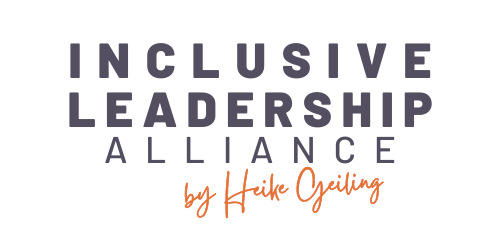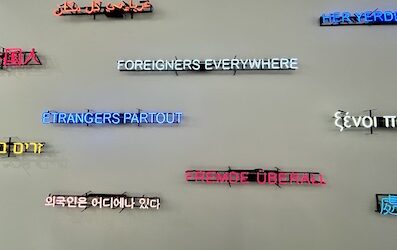The benefits of culturally diverse teams are generally well known within companies. Managers are often unaware of their blind spots, despite their emphasis on tolerant interaction. Inclusive leadership requires a genuine interest in other perspectives, a strong sense of communication, and the courage to try new behaviours. In her guest article Heike Geiling explains how it works.
McKinsey Study
Diverse teams are more innovative, make better decisions, and have a better understanding of the needs and expectations of a diverse customer base, as studies, such as McKinsey’s “Diversity matters even more” (2023), repeatedly demonstrate. Internationally oriented companies recognise these advantages. Nevertheless, many leaders’ intercultural competence remains insufficient.
Often, they fail to critically examine their own ways of thinking and behaving and do not remain open to those of their diverse employees. This leads to misunderstandings and uncertainties.
What is important in inclusive leadership?
1. Providing psychological safety
A diverse team feels psychologically safe when there is respectful interaction with one another, the opinions of others are heard, and there is a culture that allows for mistakes. In times of skills shortages, employees from other cultural backgrounds are indispensable to companies. When they feel a sense of belonging, loyalty also increases. Ensuring psychological safety within the team is a core responsibility of leaders.
2. Adopting a foreign cultural perspective
Many leaders assess professional situations from their own perspective, establishing rules and setting up work processes that they consider “normal” and “efficient.” Many are proud of their “open door policy.” However, the assumption that everyone will always come forward and openly discuss problems is a very Western viewpoint. In cultures with strong hierarchies and codes of conduct, such as Japan or Korea, employees would not approach the boss’s office to raise an issue.
Instead, it is addressed in a different, more indirect manner, usually outside of the workplace. If you work with people from other cultures you have to be curious and find out what they think and they consider to be “normal.”
The fact that employees, for example, all speak English and are familiar with the company culture is certainly helpful. However, it is no guarantee that people will work well together. Company culture never overrides personal culture. Our values are deeply ingrained and often reflected in dichotomies: what is right or wrong, fair or unfair, for instance. This is where worlds often collide.
In such cases, a leader must be able to have a meta-level conversation to find out where the gap is. For example, you could say: “I realise that I am disappointed with your answer and I’m wondering what I was expecting instead. Could you explain again how you came to that conclusion?”
3. Understand stereotypes only as an initial orientation
In intercultural training courses in preparation for a foreign assignment, managers are often taught the classic dos and don’ts of the culture in question. In the first step, this stereotypical knowledge can sometimes help to avoid major mistakes.
However, remaining stuck in stereotypes, prevents you from truly engaging with the other culture and really learning something. If the diverse team is expected to respond with openness to other perspectives and demonstrate respectful behaviour, you have to set a good example as a manager.
It is important to actively seek feedback, especially from people who see the world differently to us.
- What could we improve?
- When are we stuck in our usual ways of thinking?
- When is it particularly difficult to contribute within the team?
- Which situations or processes are perceived as challenging?
Leaders should actively ask for other perspectives. Those who manage to openly admit mistakes and not only listen to feedback from the team but also implement it, are on the right track.
4. Ask questions to promote decision-making competence
When expatriate leaders encounter a team of local or international workers with local processes, ways of thinking and approaching things, they can no longer rely solely on their wealth of experience. When leading a diverse team, the challenge is to accept that you never know everything about each other.
But you can develop methods to capture differences, ask the right questions, and actively involve employees in decision-making processes. Those who ask questions should focus on what they don’t know. Otherwise, the answers will merely confirm what the leader already assumes, which usually doesn’t help move things forward.
It is advisable to train yourself to ask “what-questions,” which are open and invite exploration. On the other hand, “why-questions” often trigger justifications. It has a different quality when I ask: “What do you still need in order to make a decision?” than “Why haven’t you made a decision yet?”
5. Enquire about approaches and consider diverse perspectives
Misunderstandings often occur in intercultural communication. To prevent this, for example, a leader sent to China could ask their local employee to explain what they understood from what was said.
This way, gaps in communication or information delivery can be revealed. The leader can also ask their employees how they would approach a specific task and why they would do it in that way. By discussing such topics, the diverse team will gradually understand better how the boss’s perspective differs from their own, and they can take this into account in their future considerations.
6. Uncover your own blind spots with sparring partners
Leaders should also accept that it is human nature to have prejudices. Building on this, their own unconscious biases can be actively revealed and questioned, allowing them to consciously behave in the opposite way.
A good method for this is “flip it to test it”: You apply a thought, for example, to a colleague from a different culture. For instance, if a French colleague’s reaction seems arrogant to me, would I have the same impression of a German colleague? Try this self-test and then ask yourself: Does it still sound right?
The better you understand your own unconscious bias, the more effectively you can counteract it. Coaches can also support self-reflection. Coaching is a good method for developing your strengths and adapting your leadership behaviour to the diversity of the team.
Once you have realised your own prejudices, you will feel more confident when interacting with people from different cultures. Helpful in this regard: exposing yourself to as many “experiences of foreignness” as possible and approaching others with joy and curiosity.
7. Peer exchange with like-minded people strengthens the ability to act
Intercultural training provides cultural knowledge. Regular dialogue with like-minded people is helpful in developing better skills and composure when interacting with people from different cultures. It is often much easier to ask a manager who is a complete stranger for advice than colleagues from the same company.
When the exchange is structured and guided by a coach, participants learn to actively listen, share their experiences, and ask effective questions that stimulate self-reflection. In this way, they can support each other trustfully within a safe space.
Focus on similarities instead of differences
Leaders should support their diverse team in focusing on similarities rather than differences. This way, employees can primarily meet on a human level, regardless of cultural influences. Companies can no longer afford for leaders to approach employees from other cultural backgrounds with unconscious biases and provide them with too little support due to their own insecurities.
In an increasingly complex and diverse society, leaders have the important task of promoting an inclusive and appreciative corporate culture that positively impacts employee retention.
This is a translation of the article that was first published here: Inklusive Führung stärkt die Loyalität




